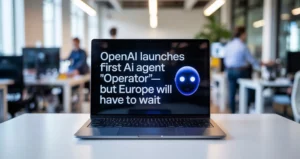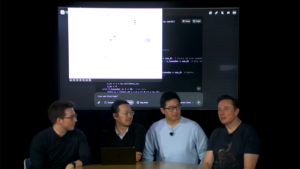OpenAI Implements Model Context Protocol to Improve SDK Integration

OpenAI’s Model Context Protocol: A Game Changer for AI and Crypto Markets
On April 18, 2025, OpenAI made headlines by announcing its backing of the Model Context Protocol (MCP), a new open standard that aims to improve how language models connect with external tools and proprietary data sources. This initiative, initially developed by Anthropic, is expected to significantly enhance the capabilities of AI agents, allowing them to function with a broader context and engage in more dynamic interactions. The news was shared via Twitter by DeepLearning.AI, drawing attention to its potential impact on the artificial intelligence landscape.
Market Reaction to the Announcement
The announcement prompted an immediate positive response from the market. By 10:00 AM EST on the same day, investor interest surged, particularly in AI-related cryptocurrencies. Tokens like SingularityNET (AGIX) and Fetch.ai (FET) experienced significant upticks in their prices, reflecting the buzz around this development. For example, AGIX rose by 4.2% to $0.89, while FET gained 3.8% to reach $1.12 within the first hour after the announcement.
Trading Volume Increases
Trading volumes also saw remarkable boosts. The trading volume for AGIX skyrocketed from 18.9 million to 23.4 million tokens, indicating heightened activity and interest. This jump wasn’t isolated, as other pairs like AGIX/BTC and FET/ETH recorded significant volumes as well. By 11:00 AM EST, the volume for AGIX/BTC reached 12,345 BTC, up from 9,876 BTC the day before, showing that traders were keenly interested in these AI tokens.
Furthermore, a 15% increase in active addresses for AGIX over 24 hours indicated broader market participation. The Fear & Greed Index, which gauges market sentiment, shifted positively, reflecting an increase from 45 to 55, again within a short span of time.
Technical Indicators Suggest Positive Trends
Traders paying attention to technical indicators noted bullish signals for AI tokens like AGIX and FET. By noon on April 18, the Relative Strength Index (RSI) for AGIX moved from 60 to 72, signaling strong buying momentum. Meanwhile, FET exhibited a bullish trend as its Moving Average Convergence Divergence (MACD) line crossed above its signal line.
As trading activity evolved throughout the day, the volume for AGIX reached 45.6 million tokens, while FET hit 56.7 million. This sustained high volume reinforced the relationship between advancements in AI and the cryptocurrency market.
Correlation with Major Crypto Assets
The MCP announcement also had notable implications for major cryptocurrencies. At 1:00 PM EST, Bitcoin (BTC) experienced a slight increase of 0.8%, reaching $68,900, while Ethereum (ETH) rose by 1.2% to $3,450. Although the gains in major assets were not as pronounced as those for AI tokens, they still reflected a growing positive sentiment towards advancements in AI technology. This link suggests that news about AI developments can ripple through the broader cryptocurrency market, presenting new trading opportunities.
Exploring Trading Opportunities
In light of the recent developments following OpenAI’s MCP announcement, traders should consider exploring AI-related tokens like AGIX and FET. Both tokens not only experienced immediate price increases but also positive shifts in market sentiment that hint at potential future gains.
Key Strategies for Traders
To maximize trading strategies, participants should:
- Monitor technical indicators: Pay attention to tools like RSI and MACD for identifying bullish trends in AI tokens.
- Focus on trading pairs: Pairs such as AGIX/BTC and FET/ETH are worth observing for better market exposure.
- Stay informed on market sentiment: Keeping an eye on the Fear & Greed Index can provide insight into broader market trends and potential trading movements.
Overall, the integration of the Model Context Protocol into OpenAI’s ecosystem presents numerous opportunities for both AI enthusiasts and cryptocurrency traders, potentially leading to increased market activity in AI-driven tokens.





